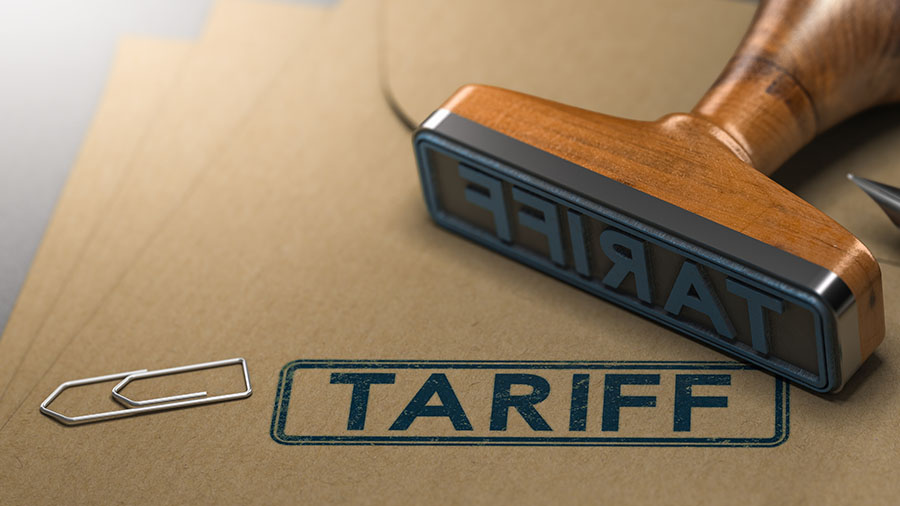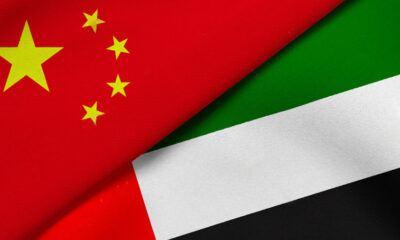China
Holy Productive Cow! China Invests in Israeli Dairy
China is getting access to some of the most productive cows in the world.

China is getting access to some of the most productive cows in the world.
Cumulative appreciation of the renminbi against the US dollar since the end of the dollar peg was more than 20% by late 2008, but the exchange rate has remained virtually pegged since the onset of the global financial crisis.
In 2009, China announced that by 2020 it would reduce carbon intensity 40% from 2005 levels.
China is the world’s fastest-growing major economy, with an average growth rate of 10% for the past 30 years.
Available energy is insufficient to run at fully installed industrial capacity, and the transport system is inadequate to move sufficient quantities of such critical items as coal.
Technology, labor productivity, and incomes have advanced much more rapidly in industry than in agriculture.
A report by UBS in 2009 concluded that China has experienced total factor productivity growth of 4 per cent per year since 1990, one of the fastest improvements in world economic history.
By the early 1990s these subsidies began to be eliminated, in large part due to China’s admission into the World Trade Organization (WTO) in 2001, which carried with it requirements for further economic liberalization and deregulation.
Globally, foreign investment decreased by almost 40 percent last year amid the financial downturn and is expected to show only marginal growth this year.
From January to June, the ODI in financial sectors was up by 44 percent to $17.9 billion, and in July alone, the ODI recorded $8.91 billion, the highest this year.
China is expected to have 200 million cars on the road by 2020, increasing pressure on energy security and the environment, government officials said yesterday.
In large part as a result of economic liberalization policies, the GDP quadrupled between 1978 and 1998, and foreign investment soared during the 1990s.
Agriculture is by far the leading occupation, involving over 50% of the population, although extensive rough, high terrain and large arid areas – especially in the west and north – limit cultivation to only about 10% of the land surface.
Except for the oasis farming in Xinjiang and Qinghai, some irrigated areas in Inner Mongolia and Gansu, and sheltered valleys in Tibet, agricultural production is restricted to the east.
China ranks first in world production of red meat (including beef, veal, mutton, lamb, and pork).
Growing domestic demand beginning in the mid-1990s, however, has forced the nation to import increasing quantities of petroleum.
Alumina is found in many parts of the country; China is one of world’s largest producers of aluminum.
In addition, implementation of some reforms was stalled by fears of social dislocation and by political opposition, but by 2007 economic changes had become so great that the Communist party added legal protection for private property rights (while preserving state ownership of all land) and passed a labor law designed to improve the protection of workers’ rights (the law was passed amid a series of police raids that freed workers engaged in forced labor).
In the northeast (Manchuria) are large cities and rail centers, notably Shenyang (Mukden), Harbin, and Changchun.
Continue reading here:
Holy Productive Cow! China Invests in Israeli Dairy
China
China’s New Tariff Law: Streamlining and Standardizing Current Tariff Regulations

China’s new Tariff Law consolidates import and export duties, clarifies rules for imposing counter-tariffs, and sets a December 1, 2024 effective date. It codifies existing practices on cross-border e-commerce and rules on the origin of goods into law, impacting trade relations.
China’s new Tariff Law consolidates rules on import and export duties that were previously implemented via several legal documents and makes important clarifications and additions to prior regulations. Among other changes, it stipulates provisions for the Chinese government to impose counter-tariffs on imported goods, codifying these powers into law for the first time. We outline all the notable updates to the China Tariff Law and discuss the implications for the country’ current trade relations.
On April 26, 2024, the National People’s Congress (NPC), China’s legislature, adopted the Tariff Law of the People’s Republic of China (the “Tariff Law”) after several rounds of revisions.
The new Tariff Law will replace the Import and Export Tariff Regulations of the People’s Republic of China, which fall under the purview of the State Council, and adopts many of its provisions.
Previously, Chinese law had not stipulated legislative powers to implement countervailing tariffs, although China was nonetheless able to impose counter-tariffs on trade partners through other means.
China’s new Tariff Law comes into effect on December 1, 2024.
China’s Tariff Law elevates several existing provisions and practices to the level of law. For instance, Article 3 of the Tariff Law clarifies the obligations of cross-border e-commerce platforms for tariff withholding and implementing consolidated taxation.
The Tariff Law also solidifies the rules and regulations on the origin of goods, stipulating that the application of tariff rates shall comply with the corresponding rules of origin. Although this has been previously implemented in practice, it is the first time this has been codified into law.
This article is republished from China Briefing. Read the rest of the original article.
China Briefing is written and produced by Dezan Shira & Associates. The practice assists foreign investors into China and has done since 1992 through offices in Beijing, Tianjin, Dalian, Qingdao, Shanghai, Hangzhou, Ningbo, Suzhou, Guangzhou, Dongguan, Zhongshan, Shenzhen, and Hong Kong. Please contact the firm for assistance in China at china@dezshira.com.
China
Outlook on Bilateral Trade and Investment between China and United Arab Emirates (UAE)

The UAE and China have a strong partnership, with the UAE being China’s top trade partner in the Arab world. Both countries collaborate on various sectors like logistics and technology, showcasing mutual commitment to economic growth and global cooperation. High-level trade and investments continue to drive their relationship.
The UAE and China share a robust partnership integral to both countries’ development and foreign policy goals, exemplifying a model of collaboration. Bilateral trade thrives, with the UAE as China’s top trade partner in the Arab world, while investments span key sectors like logistics and technology. This comprehensive strategic partnership continues to evolve, showcasing mutual commitment to economic growth and global cooperation.
The United Arab Emirates (UAE) holds a significant position in China’s trade and commercial connections within the Middle East, particularly in the Arab Gulf region. This partnership is integral to China’s broader strategic initiatives, including the Belt and Road Initiative (BRI), which the UAE actively supports.
Additionally, the UAE plays a crucial role in advancing China’s foreign policy objectives, such as enhancing South-South cooperation, particularly in technical collaboration among developing nations and the Global South in areas like resources and technology.
In this article, we delve into the dynamics of bilateral trade and investment between the UAE and China, exploring the key factors driving their economic relationship and the opportunities it presents for mutual growth and prosperity.
China and the UAE first established their diplomatic relations in 1984. While China has an embassy in Abu Dhabi and a consulate general in Dubai, the UAE has a consulate general in Hong Kong and an embassy in Beijing. China and the UAE have long been close partners, collaborating extensively on economic, political, and cultural fronts.
In 2018, Chinese President Xi Jinping went on a state visit to the UAE, making history as the first Chinese head of state to visit the country in the previous 29 years. The visit was instrumental in lifting bilateral relations to a ‘comprehensive strategic partnership’.
High-level trade has always been the foundation of bilateral ties. Bilateral commerce between China and the UAE reached new heights in 2021, surpassing US$75.6 billion. Additionally, as of 2022, about 6,000 Chinese businesses operate in the UAE, with a sizable Chinese population working primarily in the infrastructure and energy sectors. The UAE is also China’s second-largest economic partner in the Middle East, after Saudi Arabia.
This article is republished from China Briefing. Read the rest of the original article.
China Briefing is written and produced by Dezan Shira & Associates. The practice assists foreign investors into China and has done since 1992 through offices in Beijing, Tianjin, Dalian, Qingdao, Shanghai, Hangzhou, Ningbo, Suzhou, Guangzhou, Dongguan, Zhongshan, Shenzhen, and Hong Kong. Please contact the firm for assistance in China at china@dezshira.com.
China
2024 Tax Incentives for Manufacturing Companies in China

China offers various tax incentives to boost the manufacturing industry. The Ministry of Finance and State Tax Administration provide guidelines on eligibility and policies. VAT exemptions and refunds are available for companies producing specific goods or services, with a monthly refund option for deferred taxes.
China implements a wide range of preferential tax policies to encourage the development of the country’s manufacturing industry. We summarize some of the main manufacturing tax incentives in China and explain the basic eligibility requirements that companies must meet to enjoy them.
China’s Ministry of Finance (MOF) and State Tax Administration (STA) have released guidelines on the main preferential tax and fee policies available to the manufacturing industry in China. The guidelines consolidate the main preferential policies currently in force and explain the main eligibility requirements to enjoy them.
To further assist companies in identifying the preferential policies available to them, we have outlined some of the main policies currently available in the manufacturing industry, including links to further resources.
For instance, VAT is exempted for:
Companies providing the following products and services can enjoy immediate VAT refunds:
Companies in the manufacturing industry that meet the conditions for deferring tax refunds can enjoy a VAT credit refund policy. The policy allows companies to receive the accumulated deferred tax amount every month and the remaining deferred tax amount in a lump sum.
The policy is not exclusive to the manufacturing industry and is also available to companies in scientific research and technical services, utilities production and supply, software and IT services, and many more.
This article is republished from China Briefing. Read the rest of the original article.
China Briefing is written and produced by Dezan Shira & Associates. The practice assists foreign investors into China and has done since 1992 through offices in Beijing, Tianjin, Dalian, Qingdao, Shanghai, Hangzhou, Ningbo, Suzhou, Guangzhou, Dongguan, Zhongshan, Shenzhen, and Hong Kong. Please contact the firm for assistance in China at china@dezshira.com.












